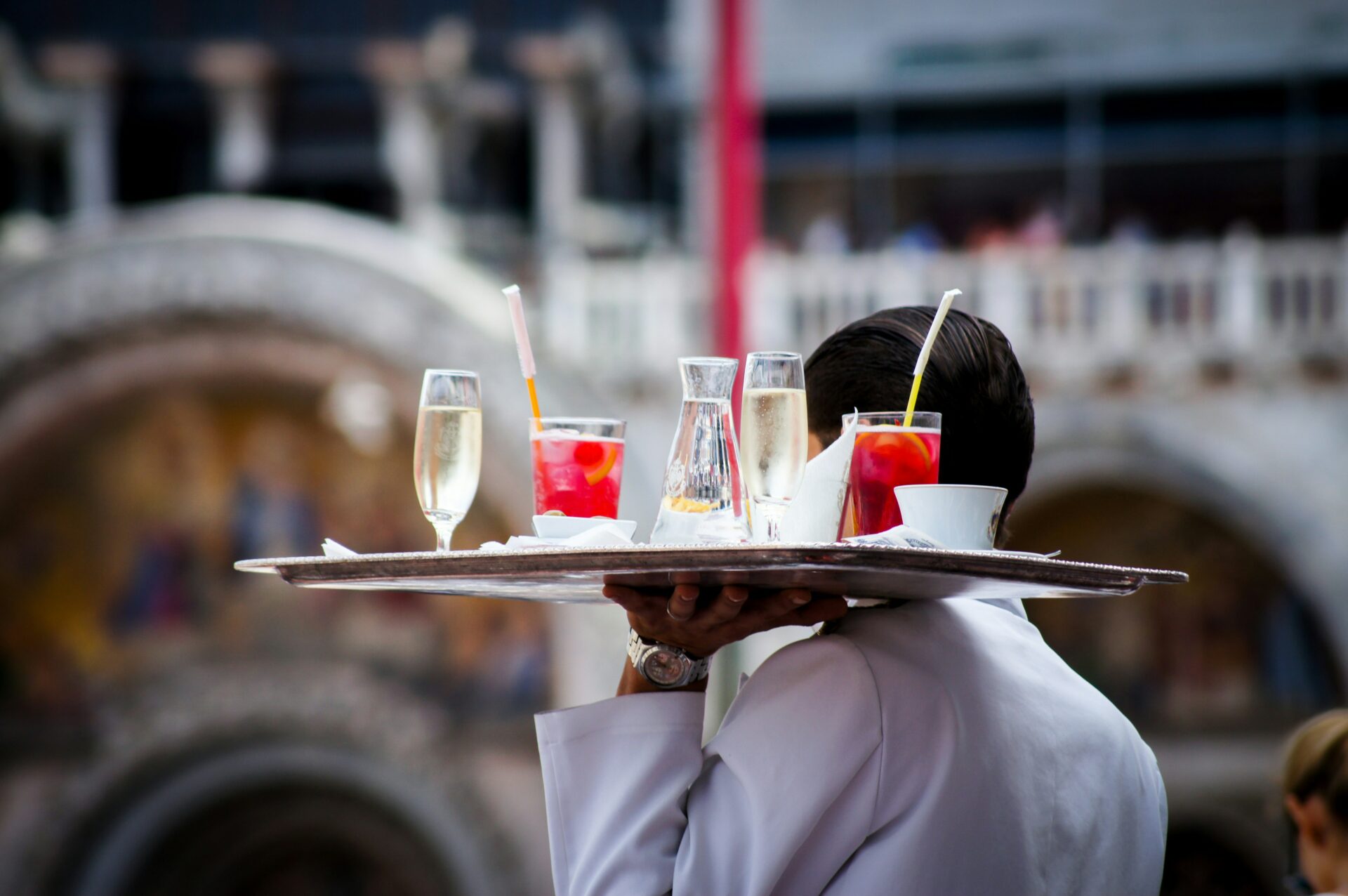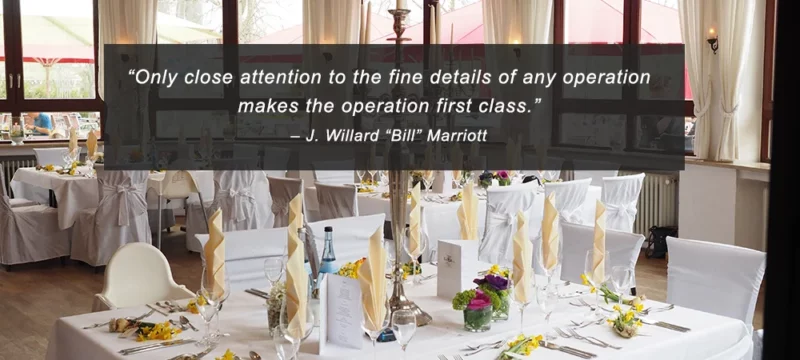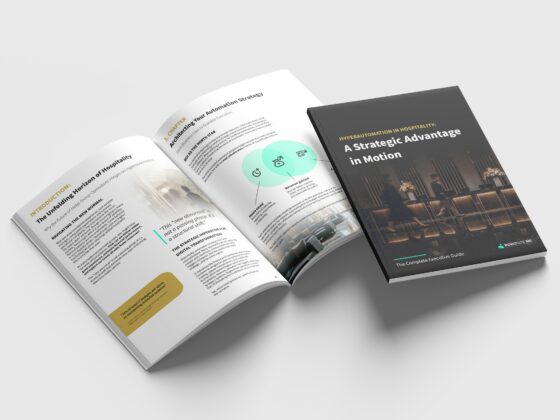Immersive experiences are not entirely new to hospitality and leisure—theme parks, destination hotels and resorts, and cultural attractions have long found ways to draw guests into unique worlds. What is changing is how properties are increasingly using technology to push those experiences further, creating spaces that blur the lines between the physical and digital and redefine what guests expect from leisure destinations.
The idea of immersion is not unique to recent generations. Children naturally lose themselves in imaginary roles during play, and the theater has been engaging audiences for centuries, dating back to medieval performances staged as public spectacles. Today, technology has expanded those possibilities, from VR goggles and animatronic characters to expansive stage settings, all designed to heighten the experience for modern travelers.
Google describes an interactive experience as one where people don’t just watch or listen—they take part, shaping the content or outcome through their actions. Cosm, a company specializing in immersive media and technology, explains an immersive experience as the feeling of being surrounded by and part of a different environment, whether created through tools like virtual reality or built in a physical space. In marketing, these ideas often overlap when talking about leisure activities, and both are playing a growing role in shaping what travelers and leisure guests expect from their experiences.
From high-tech art exhibits to themed resort environments and next-generation attractions, properties across the hospitality and leisure spectrum are finding innovative ways to use technology to take immersion to the next level.
Theme Parks & Large-Scale Attractions
Epic Universe:
Amusement parks have evolved from the spinning teacups, embracing the concept of immersive experience to capture a competitive advantage. Universal Orlando Resort’s Epic Universe is the most recent example where guests can take part in an immersive experience. At Epic Universe, a guest can visit five unique imaginary worlds, each with extensive theming, rides, shops, and exhibits, all designed to allow the guest to experience being in that unique world.
Disney:
At its California and Florida parks, Disney offers Star Wars: Galaxy’s Edge, where a guest can tour the outposts and the Millennium Falcon from the Star Wars franchise. Not all experiences come from the world of make-believe as some are from our past. Disneyland’s New Orleans Square transports a visitor back in time to 19th century New Orleans in its architecture, shops, and music.
Las Vegas:
For many, the city that defines immersive experience is Las Vegas. Beyond the casino floors, the city offers state-of-the-art entertainment venues, theatrical performances, and art venues. Possibly the best known is Sphere at the Venetian Resort. This massive spherical structure is designed for immersive storytelling, concerts, and live events. The outermost surface layer of Sphere features 580,000 square feet of LEDs, a surface so bright that it can be seen from space. The giant LED screen wraps over and behind the audience, delivering a totally immersive visual experience. The technology of Sphere can keep guests comfortable or experience the temperature drop required to feel immersed in a 4D blizzard or simulate the force of an explosion. The wireless environment can allow 10,000 people to interact with the screen simultaneously from any seat in the building. According to Placer.ai, Sphere welcomed over two million visitors in the period analyzed, a remarkably strong attendance number as the facility has only been open since October 2023.
Beyond the technological wonder of Sphere, Las Vegas is also home to AREA 15, billed as a “wanderland of art, music, and amusement” in an immersive collection of attractions. Within AREA 15 is Meow Wolf’s Omega Mart, a supermarket that takes shoppers through secret portals in aisles of whimsical products while introducing artful discoveries, interactive play areas, and psychedelic areas of light, color, sound, and space. An additional centerpiece to AREA 15 is Illuminarium Las Vegas. The venue’s state-of-the-art technology transports guests to Africa, though deep space, and to imaginary wonderlands. Illuminarium hosts immersive events for sports such as football and hockey, as well as immersive yoga sessions. Other features of AREA 15 include Wink World, an experience that takes visitors through infinity mirror rooms with lights and colors. The facility contains numerous virtual reality and alternate reality experiences, as well as zip lining, axe throwing, and golf simulators.
Museums & Interactive Art Experiences
Meow Wolf:
While the large-scale theme parks in California and Florida offer the most expansive immersive experiences, a number of other experiences are much closer to home. Museums have successfully entered the immersive experience marketplace. Most notable is Meow Wolf. Meow Wolf is an interactive art museum with an elaborate, multi-sensory environment of sound, scent, textures, and light. The properties feature pathways that encourage visitors to discover at their own pace, allowing visitors to touch and interact with the art. Currently, there are five Meow Wolf museums throughout the United States, with a sixth coming to Los Angeles in 2026 and a seventh planned for future development in New York City. To estimate the number of annual visitors, we analyzed numbers provided by the location analytics firm Placer.ai, which utilizes cell phone tracking software to determine the visitation and number of visits to a predefined target area. Such tracking does not provide exact attendance at a destination but does offer a representation of the number of visitors. We examined Meow Wolf locations in:
- Santa Fe, New Mexico (opened 2016)
- Denver, Colorado (opened 2021)
- Houston, Texas (opened in October 2024)
- Grapevine, Texas (opened 2023)
We did not present the Meow Wolf location in Las Vegas, Nevada, as its Placer.ai analytics cannot be segmented out from the other attractions in AREA 15.
Meow Wolf Denver achieved the strongest demand, attracting over 700,000 visitors. Meow Wolf Santa Fe, the brand’s most established location, generated nearly a quarter million visitors annually. Meow Wolf Houston entered its market strongly and has attracted approximately 300,000 visitors in the nine months of operation. Unlike most non-profit art museums, Meow Wolf is privately developed and operated.
OTHERWORLD:
With locations in Philadelphia, Pennsylvania, and Columbus, Ohio, OTHERWORLD is a privately developed museum with large-scale interactive art, mixed reality playgrounds, and hidden passageways leading to adventures where the visitor’s imagination is their guide. Each location features the work of over 40 artists, providing an art and storytelling experience where visitors are encouraged to interact. Throughout the year, after-hours events occur with live entertainment.
WNDR Museum:
A collection of privately owned museums with locations in San Diego, Boston, and Chicago, is an immersive, interactive art and technology experience that looks to inspire curiosity and creativity. The locations feature multi-sensory installations and interactive exhibits designed to encourage visitor participation, described as a playground for imagination. The concept is art exhibits that encourage people to not only interact with the art but to become part of it.
Paradox Museum:
If the museum experience sounds interesting but the artwork does not, the Paradox Museum Miami, a privately owned and operated European franchise, may meet your needs. Billed as “a world where nothing makes sense, but everything feels real,” this interactive museum features exhibits that challenge your perception of reality through optical illusions and mind-bending experiences. From walking on walls, a zero-gravity room, and an optical illusion chair, the museum is a unique edutainment destination designed to engage, entertain, and challenge perceptions.
City Museum:
Another eclectic attraction is the City Museum in St. Louis, which is owned by Premier Parks, an entertainment company that owns several theme parks and waterparks throughout the country. In a former shoe factory in downtown St. Louis, this interactive playground is a museum using things that cities leave behind, such as limestone, plaster, rebar, concrete, and iron. The roof is home to the “Big Eli” Ferris wheel that was purchased from a traveling circus, a 3,000-pound praying mantis, an out-of-commission bus, the St. Louis Science Center’s former planetarium dome following the renovation of the Center, fountains, and a giant slide. The facility has over 30 slides, including one five-story spiral slide, man-made chambers that wind through the museum past sculptures of creatures, and a 1925 Wurlitzer organ. Other attributes include an Artquarium featuring real and sculptured sea creatures where guests are encouraged to stick their hands in the fish tank and slide down the inside of a life-sized whale. The property also features outdoor repurposed technology, including airplanes, castles, bridges, fire engines, and a four-story wrought-iron Slinky. As shown in the following chart generated by Placer.ai attendance statistics, City Museum St. Louis had over 450,000 visitors for the fiscal year presented.
Lodging-Based Immersive Experiences
Immersive and interactive experiences can also be incorporated into where a traveler spends the night. Many a bed and breakfast or converted former factory retains the history of the building to add to the guest experience. While many properties draw on history to create a sense of place, others are building entirely new worlds designed to transport guests into imaginative settings.
Ancient Lore Village:
Our client, Ancient Lore Village in Knoxville, Tennessee, is a quaint, whimsical, fantasy-themed resort. Guests can take a self-guided audio tour through the village, describing the unique boutique accommodations and the fairytale characters that inspired them. Immersive experiences using Mother Nature are a growing trend.
Nature-Based Experiences:
The Carmel Valley Ranch in California offers the Bee Keeping Experience, where guests wear beekeeping suits and walk into the hives, getting as close and personal with the bees as they wish. The Wintergreen Dogsled Lodge in Ely, Minnesota, offers lodge-based, camping, and daytrip “hands-on” experiences in which guests drive their own dogsled powered by Inuit dogs. Guides on skis accompany the guests, pointing out signs of wildlife and sights of scenic interest while sharing Northwoods lore. The wellness aspect of the hospitality industry has been expanding, going well beyond the spa.
Wellness and Sleep Tourism:
Equinox Hotels has coined the concept of sleep tourism, with a high-tech guestroom with blackout shades, superior soundproofing, and mattresses designed for optimal alignment and cooling. Many resorts provide programmed nutrition and nature immersion to restore the body and mind to build a lasting impact on the guest’s health. Many travel decisions are being made with wellness in mind, emphasizing that the hotel is the experience.
Water & Adventure Experiences
Surf Parks:
An additional interactive experience that is gaining traction is the development of surf parks. Our firm has studied a number of these developments as their popularity has grown in the United States. Surf parks are recreational facilities that offer artificial waves for surfing, providing a controlled environment for surfers of all skill levels. The developments feature a consistent and predictable surfing experience with various wave settings to accommodate different abilities. The growth of these parks throughout the country expands the surfing footprint beyond the ocean and Gulf coasts.
Whitewater Rafting:
We have also examined whitewater rafting as another form of water-based interactive experience, Whitewater parks generally take two forms: pumped waterparks such as the U.S. National Whitewater Center in Charlotte, North Carolina, or the Montgomery Whitewater Park in Montgomery, Alabama (another property we analyzed) and flow diversion parks that divert portions of a natural river through a designed channel. While nature provides some of the most exciting and beautiful whitewater rafting and kayaking experiences, such as Grand Canyon rafting, these manmade and flow diversion parks provide a recreational use for the general public, as well as training and competition facilities. As with surf parks, whitewater parks can be controlled to accommodate various experience levels. Both surf parks and whitewater parks offer a safer and more predictable alternative to their natural counterparts. Also, both can incorporate features such as restaurants, bars, and retail shops.
Traveling & Temporary Exhibits
Immersive Disney Animation:
Not all experiences have a permanent home. Immersive Disney Animation has developed a traveling experience in conjunction with Lighthouse Immersive Studios that is themed around Walt Disney Animation Studios’ library of films, allowing a guest to imagine being in the films. Through animation, the guest experiences walking into a castle or riding a train. The tour has visited numerous cities throughout the United States and abroad.
Van Gogh: The Immersive Experience:
Another touring exhibit is Van Gogh: The Immersive Experience. With the use of digital projections and virtual reality, the work of Vincent van Gogh’s artwork is brought to life. Accompanied by sound and light effects, this exhibit has been touring since 2017 and continues to be popular in the United States and Europe.
The Messi Experience:
This is another example of a traveling multi-room interactive attraction that connected guests with soccer star Lionel Messi.
Conclusion
Immersive and interactive experiences are no longer niche attractions; they are redefining what travelers expect from leisure and hospitality. From large-scale theme parks and innovative museums to nature-based resorts and wellness retreats, the trend is clear: guests want to be active participants in their journeys, not just observers. Technology has expanded the boundaries of what is possible, while creativity and storytelling provide the substance that makes these experiences memorable.
The impact is significant. As demonstrated by attendance figures across a wide spectrum of attractions, immersive environments consistently draw hundreds of thousands of visitors annually. More importantly, they create lasting emotional connections that keep guests engaged long after their visit ends.
For operators and developers, the opportunity lies in crafting environments where imagination, technology, and authenticity intersect. Immersive experiences allow each guest to step into a world of their own, making them the central character in a story that is both personal and unforgettable. This is not just the future of leisure—it is the expectation of today’s traveler.














